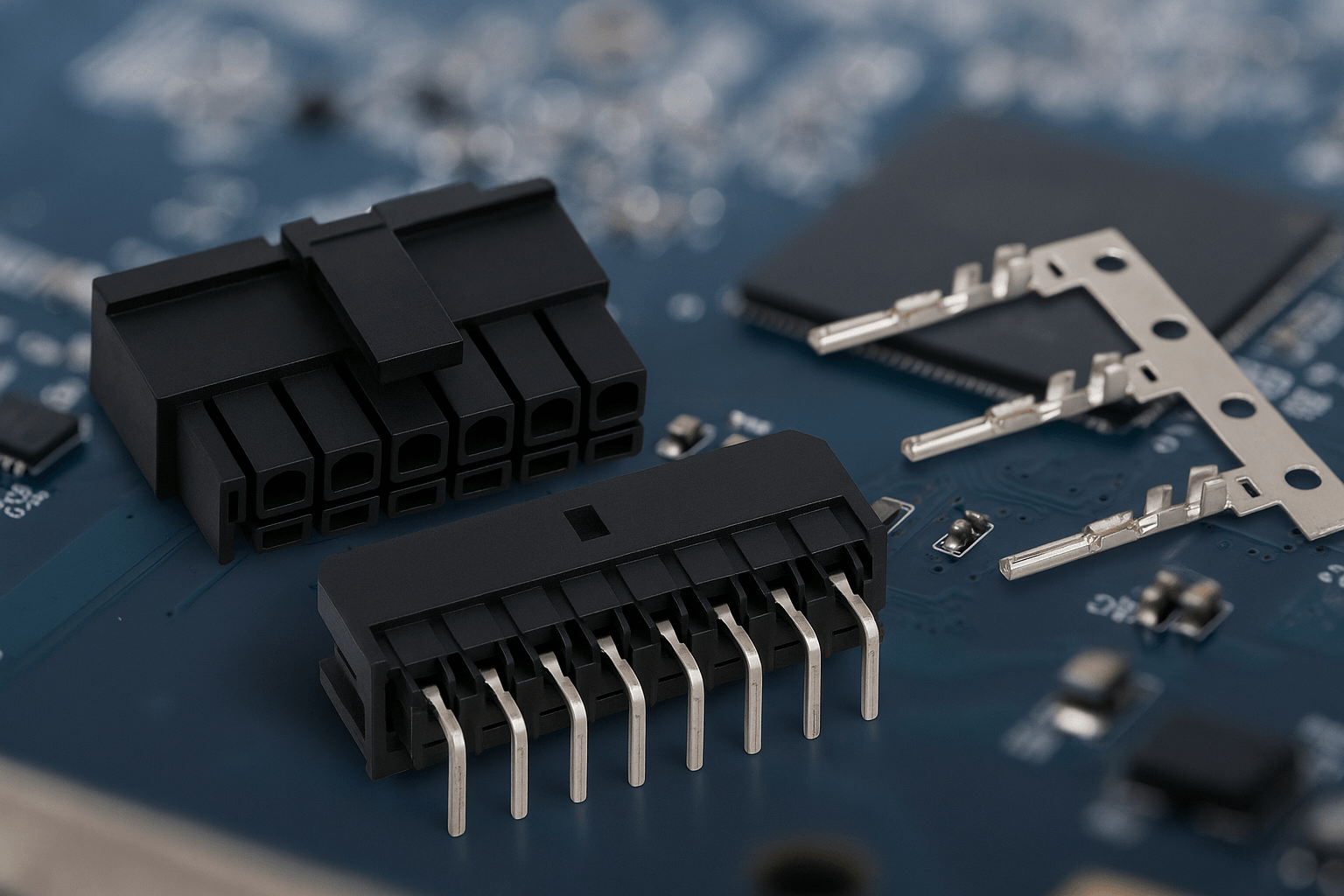What to Consider When Designing a Wafer Connector
When designing wafer connectors, the primary focus is on high density, miniaturization, and reliability, while also optimizing electrical performance, mechanical durability, and environmental adaptability.

High Density & Miniaturization
- Compact Structure: Wafer connectors are designed to be ultra-thin with minimal pin spacing, making them ideal for high-density circuit boards. They enable multiple connection channels within limited space, aligning with the miniaturization trend in modern electronics.
- High-Density Layout: Utilizing dual-row or multi-row staggered terminal arrangements, wafer connectors support dense signal routing, catering to complex circuits and high-speed data transmission requirements.
Electrical Performance
- Low Contact Resistance: Optimized contact design and high-conductivity metal materials (such as copper alloys, gold, or silver plating) ensure stable and efficient signal transmission with minimal contact resistance.
- High Transmission Speed: Capable of handling high current and high-speed data transmission while maintaining excellent signal integrity, even in complex electromagnetic environments.
Mechanical Performance
- Insertion & Withdrawal Durability: Designed for high mating cycles, wafer connectors maintain a reliable connection even in frequent plug-and-unplug scenarios, with strong resistance to vibration.
- Structural Strength: Constructed using high-quality plastic and metal materials such as phosphor bronze or beryllium copper terminals, along with precision stamping processes, ensuring stability under mechanical shock and vibration conditions.
Environmental Adaptability
- Environmental Resistance: Made from high-temperature, corrosion-resistant, moisture-proof, and dust-proof materials to maintain performance in harsh conditions.
- Operating Temperature Range: Capable of functioning within a wide temperature range (e.g., -40°C to +105°C), meeting the needs of various applications.
Compatibility & Flexibility
- Versatile Specifications: Available in multiple pitches, pin counts, and configurations (single-row, dual-row, and multi-row) to accommodate different PCB layouts and device requirements.
- Modular Design: Supports stackable, "building-block" configurations, allowing engineers to expand the number of contacts as needed for greater design flexibility.
Safety & Reliability
- Anti-Misalignment Design: Equipped with foolproof structures to prevent incorrect insertion, ensuring intuitive and efficient operation while reducing assembly errors. Quick-connect and disconnect features improve production efficiency and maintenance.
- Compliance with Standards: Meets IEC, UL, and RoHS international standards, ensuring global compatibility and safety.



